If cars are so much saaaaaaaaaaaafer than they used to be – courtesy of the beneficence of the federal government – how come fatalities are increasing rather than decreasing?
It’s another one of those awkward questions (like the ones about rivers of molten steel in the basement ruins of the Trade Center Towers) that no one seems to want to ask . . . probably because the answers don’t jibe with the conventions.
Or – in this case – the regulations.
About 40,000 people died in car crashes last year.
2018 was also the third year in a row that fatalities increased.
Curiously, that’s roughly the same interval of time during which the most aggressive – the most pre-emptive – saaaaaaaaaaaafety systems have been mandated or otherwise become fairly common in new cars.
For example, automated emergency braking and “lane keep assist” – which prods the inattentive driver with beeps if he allows the car to wander out of its lane; in some cases, countersteering to get the car back in its lane. Also “pedestrian detection” and back-up cameras (with buzzers) intended to prevent pedestrians and so on from being struck or run over by not-paying-attention drivers.
And that probably accounts for it. The uptick in motor vehicle fatalities.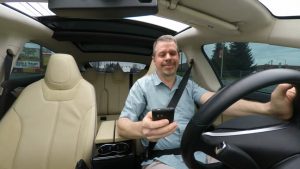
Drivers are paying less and less attention to driving because cars are taking over more and more of the driving.
This is deliberate policy; the premise being that people can’t be trusted to drive attentively and competently, so let’s let the cars take over.
But these peremptory saaaaaaaaaafety systems have incentivized inattention. Why not take your eyes off the road – and send that text – when you have been told you can depend on the car stopping itself if the car ahead of you suddenly slows down?
Or so you hope.
Another problem with all these saaaaaaaaaaaaaaafety systems is that – just like us – they are not infallible, even when they are paying attention. 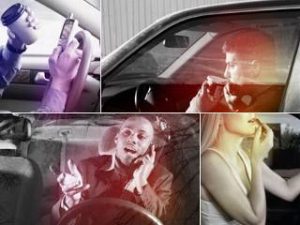
In some ways, they are more fallible than we are – and so double-down on the problem.
Automated braking, adapative cruise control and blind spot/pedestrian detection systems, for example, depend on proximity sensors to detect an object (or vehicle) in the path of the car. But the proximity sensors are mounted outside the car – where they are exposed to acuity-occluding phenomena such as mud splashed on them, or ice or snow covering them.
A driver who assumes they can still “see” – and that the car will brake – may be in for an expensive (and possibly worse) lesson.
Back-up cameras have a limited field of vision, even when the cameras can see. They haven’t got the depth perception a healthy human eye has. They lack peripheral vision, too.
Who is more to blame? The not-paying-attention driver? Or the technology which encourages him to not pay attention? These systems are sold as adjuncts to driving – and there are typically layers of lawyered-up warnings and cautions urging the driver to pay full time attention.
These systems encourage inattention and passivity behind the wheel.
Both of which result in delayed reactions to situations that demand immediate attention.
The time it takes for a developing problem to register in the brain of a driver who was looking at or thinking about some other thing – plus the time it takes for him to decide what to do – and then do it – can be the difference between a fatality and a close call.
Automated systems aren’t smart, either.
They are merely programmed.
If a new variable is introduced which the programming didn’t anticipate, the system can’t compensate. Hit the dog that just ran in the road? Or the kid on the side of the road, if you (or the car’s programming) decides to swerve to avoid the dog.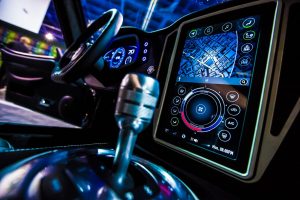
A compounding problem – which raises yet another question almost no one seems interested in asking, probably because of the answer – is the ubiquity of distracting gadgets inside cars, especially the operational equivalent of the cell phones people are told not to use while driving.
People are ticketed for texting and driving – but in the bizarro world that is the United States, it’s ok to tap/swipe/scroll through the Moby Dick-like menu of apps and “info” and other such that are built into literally almost every new car, even the least expensive new models.
In several new cars – the Tesla S and Model 3 and the new Prius hybrid, for example – there are almost no physical/tactile controls that can be manipulated by touch – without having to look – in order to perform basic and necessary adjustments such as turning on the defroster or increasing/decreasing the heat. Everything is on the flat screen – which you have to look at because you can’t operate it by feel.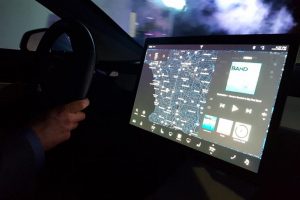
And in the Prius – and Teslas – the huge LCD touchscreen is mounted in the center of the dashboard – so the driver has to look to his right – and thus, the road is no longer in his line of sight.
Physical controls for things like the AC and heater are still common – but they’re becoming less and less so with each new model years as the car companies practically step on one another to be the first to offer all-touchscreen or mostly touchscreen interfaces in their cars.
Uncle approves – or at least, doesn’t forbid.
Which brings up the real question: If Uncle is so very concerned about our saaaaaaaaaaaaaafety, why doesn’t Uncle incentivize attentive driving? Discourage passivity behind the wheel?
The answer – which is certain to bring up more uncomfortable questions – is that Uncle’s true agenda isn’t saaaaaaaaaaaaaaaafety but control.
The less control we have over our cars, the more control Uncle has over us.
The body count is incidental. They are the “eggs” which are necessary to break in order to make the “omelettes.”
. . .
Got a question about cars – or anything else? Click on the “ask Eric” link and send ’em in!
If you like what you’ve found here please consider supporting EPautos.
We depend on you to keep the wheels turning!
Our donate button is here.
If you prefer not to use PayPal, our mailing address is:
EPautos
721 Hummingbird Lane SE
Copper Hill, VA 24079
PS: Get an EPautos magnet (pictured below) in return for a $20 or more one-time donation or a $5 or more monthly recurring donation. (Please be sure to tell us you want a sticker – and also, provide an address, so we know where to mail the thing!)
My latest eBook is also available for your favorite price – free! Click here. 


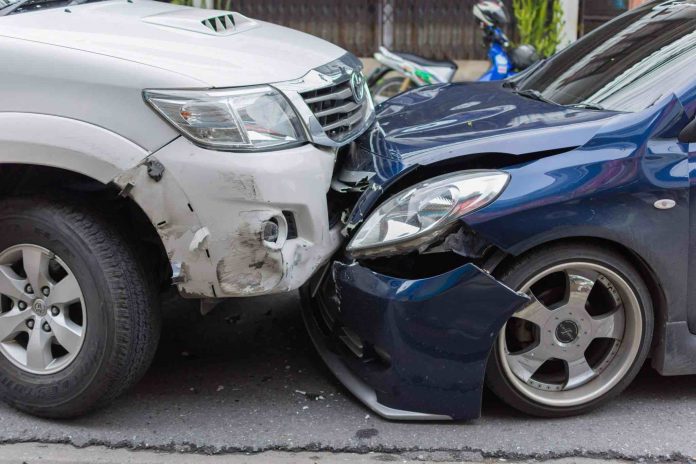

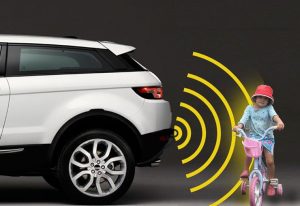








Let’s consider some statistics to see what may be afoot with these fatalities.
As a hint, please remember that we have had other vehicle technology Event Horizons before the 20-teens.
If you are a Real Biker then you remember around 1998 when the ‘new’ mobile phone became small enough to fit in a pocket. At the same time the number of vehicle collisions in every U.S. city started to climb through 2006. During that same period motorcycle fatalities were up almost 40%.
So at the beginning of 2000 there was data showing the mobile phones had a massive impact (pun) on vehicle accidents and fatalities, and we know there was a constant increase up to 2006.
It was around 2004 when NHTSA released an internal report that mobile phones were involved in greater than 24% of all [multi] vehicle accidents. This was a fact backed with data, and the report read as if no one wanted the info to get out.
Prior to the 2004 report, there was a report by the ‘insurance industry’ around 2002 complaining that the current vehicles were too quiet, and that drivers could not hear oncoming emergency vehicles and impending collisions.
So before mobile phones were increasing the number of collisions, we had problems due to the noise-cancelling features of the cars.
If you look at the collision numbers with fatalities from 1995 to the present there are two major stair steps around 2003 and 2004. The data shows this is related to quiet cars and mobile phones respectively.
Starting in 2006 the stair steps of increased collisions start to flatten out, and increases since 2007 are 8% less than the change in U.S. population. (not a 1 to 1, but interesting correlation)
So I think we are seeing the evil specter of complexity causing rot.
Phones and car design were major problems, and were related to making drivers less aware and less attentive. But in recent years we are seeing how increases in the complexity of a system eventually reach a state where Mean Time Between Failures is no longer a reliable indicator and something will break in a short period of time.
I hope to write an article about this complexity problem as it has killed the True reliability of all cars and put us in a position where we will never have vehicles as reliable as they could be.
It used to be said that “Those who can, do. And those who can’t, teach.” Now we have an addition: “Those who can’t do anything, become government workers.” And history is littered with those who took the route through personal saaaaaaaaaaaaaaaafety to control others.
And it’s happening again. First, we have to create “safe speech zones” so that people won’t get offended by something being said that they disagree with.
Followed by, “No one needs eight rounds to shoot a deer,” as bleated by government hack and New York governor Andrew Cuomo (or is it Cowmoo?). If it was him doing the shooting, it might take eight shots to kill that deer, but it leads to, “We can’t allow private citizens to own guns. It’s unsaaaaaaaaaaaaaaaafe; only the police should have guns.” Well, we know how well THAT works.
When it comes to citizens’ rights, government has a record unblemished with success.
Just after watching Doug’s review… https://www.youtube.com/watch?v=nL5l-_9bIVk of some Mercedes. And, iirc, he was touting that it had physical button “backups” for all the [all the? all the important? dunno.] onscreen controls. And he’s a saaaafty fan from what I can tell.
Cameras made the screen mistake decades ago and have started to solve the problem.
“Which brings up the real question: If Uncle is so very concerned about our saaaaaaaaaaaaaafety, why doesn’t Uncle incentivize attentive driving? Discourage passivity behind the wheel?”
Easy.
Because we’ve made obtaining a driver’s license a right, instead of a privileged based on proving a learned skill. You should have to prove you are capable of not hurting yourself or others. In addition, although the penalty is steep, you still can manage to keep your license for DWI.
I had the most inane, frustrating conversation while on a jury for a DWI about what having that license means and what the person agreed to in order to obtain it. “But he had to sign that! Otherwise he wouldn’t have gotten his license!” – Yes, but it doesn’t mean he’s immune from the agreement. (He refused BAC tests).
So here is a question: One day, sadly, I will eventually have to purchase another vehicle, as mine will eventually die. However, I do NOT want “driver assist”, “braking assist”, or any other crap like that in a vehicle. Am I doomed to be stuck with junk I have to pay for, that I do not want? In the neck of the woods I live in, there is a reason why (in the “Spring”) people play Frogger with their vehicles on some of these roads: We are dodging the pot holes and ruts made from the perma frost and long Winter. Are there vehicle models out there with “not as much safety junk” included in them”, or is this what we are all doomed-as drivers-to be stuck with?
Hi Joe,
If you hurry, you can still find a few 2019 cars that do not come standard with these features; but the window is closing. I am willing to bet that within two years, it will be impossible to buy a new car without “brake assist” and “lane keep assist,” as well as ASS.
Eric, looks like we have another Clover in our midst. Take a look at Techie dude’s comment, I don’t know whether to laugh or cry.
People should show competence in driving and be able to pay for any damages they cause by negligence. Uncle does not have to be in charge though. Why not let insurance companies provide licenses to its customers?
Years ago I read a book about the unintended consequences of public policy. Can’t remember the author. One of his suggestions to lessen automobile accidents was to get rid of the airbags and seatbelts, which make the driver feel safer and hence more likely to drive dangerously, and replace them with a knife mounted on the steering wheel and aimed at the drivers heart. Then he will pay more attention to driving and be a safer driver.
Here’s my take : cars today are very fast compared to what they used to be. 0 to 60 under 10 seconds used to be fast, today, even econoboxes go 0 to 60 in 6-7 seconds; this coupled with the “all traction” feature, which makes people drive in icy conditions as if it was dry surfaces, make people drive like missiles. Women in particular, seem to enjoy accelerating without slowing down until they are on top of the stopping situation. This, with the addition of all the above mentioned distractions, provide for a perfect scenario for disaster.
Might also mention that “recreational drug use” mixed in this , cannot help
Stopped by the DOT, I turned down a county road giving us a wide spot with no traffic and well away from the interstate I had been on.
While he’s doing his thing we’re having a conversation. He said accidents were on the rise and wondered what I thought the cause might be. I just turned and looked at the interstate where there were two lanes of traffic each direction doing 75 to 80 bumper to bumper.
It was a Friday and so, at its worst.
This is typical on every imterstate in Texas and surrounding states. It’s especially bad on I20, I10, and both I 35s. Having every little town along these routes move their city limit signs to take up as music of those roads as possible along with County radar creates its own hazards.
Cellphone use is another cause as is plain incompetency. Being out there all day I not only see the wrecks but often find out the cause.
I’ve noticed a couple groups that seem to be leading accidents, young women and illegals.
BTW, the only way to replace the stereo /radio in new vehicles is to have 2 systems since the only things you can do without looking at the infotainment screen is control the windows, locks, turn signals, headlights and wipers. Other than the , stereo, HVAC and cruise there’s nothing else I require.
At least seat controls remain on the seats. not hard to understand why I don’t want anything newer than a 94 model
Eric, ive felt this myself personally. I learnt to drive (well on the road at least) out in Asia, where one has to pay attention and be ready for anything (and I mean ANYTHING). When I was being de-programmed and then re-programmed to drive like a British person for a UK license – one thing I remember the instructor kept getting me for was that, even when i was pulling out onto a road with traffic coming from one direction, I would still look both ways a couple times. He was always like if you know its open on that side you dont have to look again before going. Its a 1 way road, nothing can come from there!! Im kept thinking little do you know my friend….
Anyhow onto gizmos. My car by todays standards is pretty ancient. but one gizmo it does have is 360 parking sensors. When I went to buy the car some years ago, the were still a luxury item and the salesman kept telling me i dont have to worry about constantly checking all around me because the sensors would warn me! Anyhow over they years I recently realised, ive really started half assing it while reversing out of the drive! initially it was just when I was in a hurry – now its every time im plugging in my phone and setting up my tracklist while relying on the sensors to warn me of something nearby!! Infact when I go back home and drive my dads car, I find it so hard ! No sensors !!! Know its probably shameful but its a fact ! After a while we all start depending more and more on these things. Till one day – bang!!! And enough of that – our dear leaders will eventually, for our own good ofcourse – ban driving altogether 😛
Exactly! It doesn’t matter whether it’s a one-way or a two-way street; you never take anything for granted whilst behind the wheel. There’s an old saying: “Expect the unexpected”.
And yeah, as far as these gizmos, I probably would’ve told that salesman to go shove ’em up his ass! I have the best safety feature of them all: common sense. Obviously, the idea is to eventually reduce humanity to a fetal state where the government provides literally everything for us (at its own discretion, of course), while we simply “exist”.
Poor driver training is my #1 cause.
But also – I was behind a car the other evening where the driver & front passenger had the dome light on as they drove, and used the illumination to take selfies.
I agree. They don’t teach driver’s ed in school anymore. And no one talks about ‘defensive’ driving anymore. In fact, many drivers around here live by “offensive” driving rules. I also see people driving way too fast, 20 to 25MPH over the speed limit… while eating, texting, talking on the phone etc. Used to be we took driving very seriously… now, not so much. Oh… and then there’s stop signs… I guess a lot of folks think they are just a suggestion.
Bottom line: It’s the driver that’s the problem.
To paraphrase Morpheus: “What is Safe? How do you define Safe?”
I would argue that the increase in deaths on the roads is for the same reason that bare-knuckle boxing is actually LESS dangerous than fighting with gloves: When you know you don’t have room for error and can really get hurt, you tend to be more cautious.
People figure they can drive inattentively because they think their air bags and crumple zones will save them.
“People figure they can drive inattentively because they think their air bags and crumple zones will save them.”
Exactly! As Eric had already mentioned, this is exactly why the government is allowing (and even mandating) all these gadgets and “driver aids”; to make “useful idiots” out of us. That way, the government can further its excuse to “protect” us even more.
Good point. Also the helmets and pads are the reason almost all football players get brain damage. They hit each other a lot harder than they would without all that stuff.
Government is the problem. Cops are the problem.
Leave people alone to drive, to get as quickly and effectively to their destination as they can, and you will not see people texting, fiddling with touch screens, etc. But when you are forced into nerf world, with speed limits totally disconnected from reality enforced without reason by buzz cut 90 IQ Gestapo, then it makes sense to surf the web, text, fiddle with the Ipod, eat a 4 course meal, etc.
Another part of the problem is the lack of legitimate, needed public transport for city dwellers and folks who don’t want to drive and shouldn’t have to. Once again, government licenses for taxis, buses, and trains make this a losing proposition.
But I’m preaching to the choir here, and the great bleating flock is not interested in that uppity guy over here who wants to do something that scares them.
Unfortunately, as we all know, the wrong things will be blamed, when they get around to “fixing it”.
Some of following wrong reasons that will be used:
1. The boogyman one, SPEEED!!!!! The few places (mostly interstates) where the speed limits has been increased after decades of work. Never mind there has likely been more speed DEcreases in the last two years vs the amount of increases in the last 15. The community I live in has no roads with a speed limit more than 35. So its being used already.
2. Older non tech-ed cars will be blamed for not being compatible with new road “control equipment” that will be here before we know it.
3. impaired drivers. No, not the actual people being problems. Just the people picked off by heroes. And at some point people driving non tech-ed vehicles. It would be funny if it wasn’t true cops are never in the right place when it comes to actual dangerous drivers.
The market for 25-year-old cars should grow exponentially as this nonsense technology keeps rolling-out and more and more people opt-out. Vehicle restoration is probably a good niche to get into at this point. Anyone in the industry seeing a surge in demand out there?
If it does become a cottage industry, look for cash for clunkers round 2 to suddenly happen.
At least in my area, CFC’s seemed to get most of the remaining 1990’s era cars off the road. Up to that point it seemed many were still around, and they should have stuck around as my area was hit hard during our latest depression. To be honest the “recovery” has not gotten here.
For this cottage industry to happen, it has a few things to overcome. 1. Getting people off the mindset of not spending money on aging cars (that aren’t going to be collectable). 2. How to finance rebuilds vs. buying new or a different newer used car. The current banking system isn’t going to want to lend for such a thing, and people don’t have the cash on hand. 3. Staying off the government regulatory radar. 4. Keeping the price reasonable. If number 3 doesn’t happen, keeping prices affordable will be hard.
“A compounding problem – which raises yet another question almost no one seems interested in asking, probably because of the answer – is the ubiquity of distracting gadgets inside cars, especially the operational equivalent of the cell phones people are told not to use while driving.”
Bingo! This, in my opinion, is The Biggest Problem. How can the safety Nazis permit cars to be designed and sold with so many dangerous touch screen controls and distractions? It’s because, as you said, the fedgov really doesn’t care about safety….it’s all about control.
This makes me madder than any of their other vehicular meddling.
Good article.
Eric,
Nicely done, dropping that reference to 9/11 in the second paragraph.
A damn shame how that whole event and the obvious holes in the official story are now a dead and forgotten issue, as this whole mess speeds up and important history is getting left behind and forgotten faster and faster.
Note that the decrease after 2007 and increase after 2014 were more economic in nature. When the grea recession. Hit deaths dropped dramatically in 2008 and 2009.
But Eric has a point in the so called “safety aids” too.
I’ve witnessed the sharp increase in these numbers in western NYC metro area, which most call rural, but I call suburbia. Head-on’s are almost every 2-3 weeks now here. Most are seriously injured with many deaths.
I almost was a victim too, with a differential speed of 100mph. The other car slowly drifts over, so it doesn’t ‘catch’ your eye until it’s almost too late. My son and I got lucky I did catch it, ours mirrors came within 4-6″, and I almost hit a pole on the shoulder trying to get out of her way. If we hit, she would have died for sure, and my son and I would have been in the hospital for sure or worse. Simply my 4500lb truck vs her 2500lb compact car.
My son witnessed one right in front of him. Was his friend, survived but they had to cut him out. compact car vs medium duty truck, lucky it was not ‘inside the frame hit’.
What bothers me, is it’s almost always because they are using cell phones, yet the accident reports never states such. Why?
Same with all the opioid deaths of younger people. Why aren’t they saying why?
I think that new cars make the roads more dangerous for two reasons. One, with all the safety equipment, people get a false sense of security; they take risks that they would not have taken in an older car, especially one sans airbags. Two, the tech is distracting; folks focus more on the gee-whiz features than they do on the road.
As for old school controls, there’s a REASON why airplanes still have a plethora of knobs and switches; there’s a reason they haven’t put everything into a big tablet. It’s because old school controls and switches tactile; they can be operated by feel, and are thus safer for the pilots.
I loath touch screens. No tactile feel is the biggest complaint. They have no purpose being in a vehicle but the manufacturers do it because people are used to them now and one touch screen is cheaper than knobs and switches. This is one instance where cars are being made less safe to save a buck and just about nobody cares.
The whole purpose of a touch screen is to concentrate a bunch of information in one place, which is totally unnecessary in a simple machine like a car. I design and program complex systems where they are needed and useful, but they always require thought and interaction to use.
They are a little cheaper than traditional (and superior) controls, but more importantly they become very expensive to maintain and very quickly obsolete and unavailable. Which of course will render the car uneconomic to repair.
The touch screen functions can already be taken over by tablets and such. There are aftermarket kits for that so the screen going out isn’t really a car killer but it’s more money to deal with than should a simple switch or button fail.
In 2013 I rented a Focus with the MyTouch option. I hated it. Far too complex, especially for a car you’re never driven before.
So in 2014 I bought one, a base SE model with a very simple dash and KNOBS.
The big screen in the TESLA is absolutely hideous. How can anyone claim it is a luxury vehicle when its just a giant IPAD hot glued onto the dash? Is that luxury?
You already pointed out the Giant Super Nintendo Touch Screens in every vehicle now, but to add to that many of those have AC and Radio controls in them. With actual physical knobs to turn and muscle memory, older cars were easier to adjust the climate in. Not much anymore, even my 13′ Silverado is harder to calibrate than the 11′ Xterra and it’s 3 knobs. The truck has small buttons that are also in the line of the shifter knob which I always hit reaching for them. Does anyone who designs these cars actually drive them? Or do they have ‘engineer’s usability blindness’ and just assume they are making a good product in a sterile environment?
The mechanical climate control levers in a Ford Maverick/Mercury Comet are on the upper left of the dash. Just left of the instrument cluster pods. This is a great location. The SN95 mustang has them high up in the center of the dash. That’s a second best. My ’12 Mustang has them low in the center of dash, this is annoying. When high on the dash I don’t have to look away from the road at all or even use feel. They are right there in view. I guess over the years ford decided more people fiddle with the radio.
Engineers have little choice in the placement of controls in a product like a car these days. It will be driven by the industrial designers. The only leverage engineers have over industrial designers is regulatory requirements and cost.
Dad’s ’76 Charger has the HVAC controls under the driver’s left hand, next to the door. WHERE THEY BELONG! In fact the whole dash and all the controls are in a wrap around cowling and within easy reach of the DRIVER. No one else touches anything. The passenger gets a clock (but it is angled toward the driver), and two air conditioning vents. That’s it.
My favorite car was my 1989 Subaru XT. The HVAC controls were on a pod sitting behind the wheel at 2:00. The lights and some other controls were on the 10:00 pod. Again, the driver was in charge of the temperature. The stereo head unit was in the middle of the dash, a harbinger of things to come, although the ’73 Dart we inherited from Grandpa had the heater control in the middle, but the radio was still close to the driver. That was the one that had a big door vent down by your feet. The dog loved that vent, she’d stick her entire head in the thing to get all the smells.
These days they have to design around airbags. And dual climate controls (which I find hard to believe work), along with marketing to self-appointed “copilots” who think they are helping.
My term for this is very simple ‘build a better idiot’.
The government deliberately turns people into children and idiots to justify greater parenting and power. This will then in turn be used to bring about the company town utopia that has long been desired since experiments from Pullman to Fordlandia ultimately failed. The control freaks, the utopia builders, the political class and all the rest who think they can build a better world through having power over their neighbors want all this automation. The lazy lap it up, but if it had never come to be most would never miss it or desire it.
I believe in something greater than myself. A better world. A world without sin.
Bottom line is this, people are SO addicted to their “smart” phones, they think a car should be a four-wheeled version of the same. Having done my share of computer programming and servicing, I know what the damn things are, and “magical” isn’t any of those things. The dependability o0f automobiles is moving away from the confidence of tangibility, and inexorably toward the realm of “faith”. This is beginning to border on insanity, because it is well past sheer foolishness and gullibility.
A good example of “technology” having adverse effects is that of “traction control”. There are cases where traction control actually causes accidents. A case in mind is that of a motorist attempting to traverse a slightly icy upgrade. Adding power (the normal response) to overcome the slippage is negated by the traction control. In some cases, the car actually slid backwards, unable to overcome the grade due to the car “taking over” and reducing the throttle response from the driver.
Yes, in some cases, the traction control can be turned off, but being in a compromising situation is not the time to have to manually shut it off.
With the traction control on my ’12 I’ve learned that the sensors in my butt still allow me to react faster than the traction control. I’m already correcting before the light comes on. Does it help? Hard for me to say. I think a couple times it did. It hasn’t had an adverse effect yet.
My 2010 Sentra has that “traction control” that I routinely turn OFF in slick & snowy conditions. I know how to drive in snow & ice, having learned in my “primitive” first cars, being a 70 Monte Carlo, 77 Regal & 68 Bug (by the Gods I miss that bug). The only new safety feature I find to be of any use in day to day driving is the ABS, which helps in confirming my assessment of just how slick condition are when starting a winter drive.
Yea, folks are too goram fixated on the cell phones. Mine is most useful as a means to take along my choice in music without fiddling with CDs, decent camera for snapshots and a phone to call out if needed.